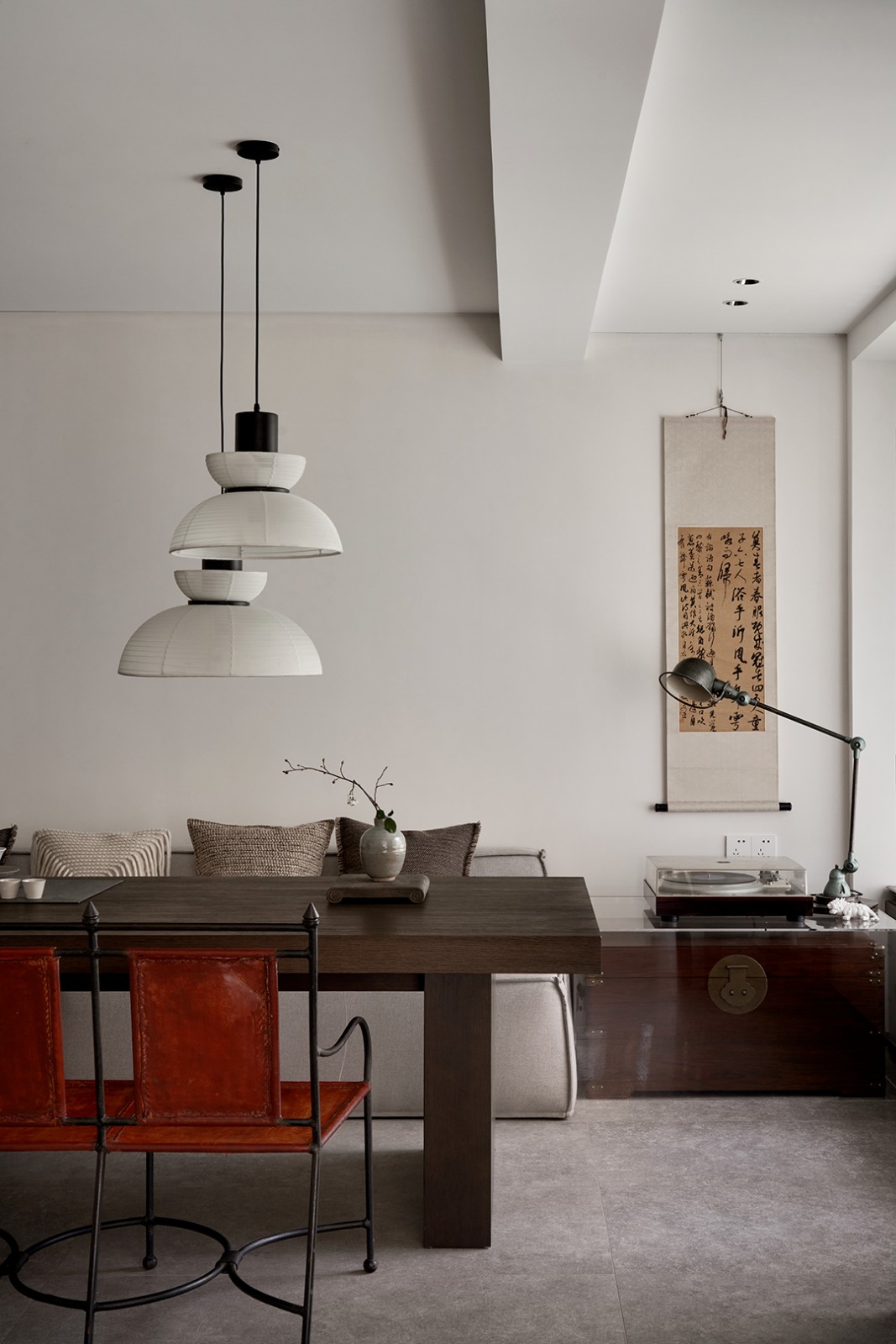The Pinch Library And Community Center Olivier Ottevaere + John Lin
2014-04-25 01:00
Courtesy of Olivier Ottevaere + John Lin
Olivier Ottevaere John Lin提供


架构师提供的文本描述。紧要关头是中国云南省双河村的图书馆和社区中心。该项目是2012年9月地震后政府领导的重建工作的一部分。大多数村庄的房屋被毁,使居民在帐篷中居住长达一年。地震后,政府资助了新的混凝土和砖房以及一个大型的中央广场。在第一次实地视察期间,房屋仍然不完整,广场是一个很大的空场地。
Text description provided by the architects. THE PINCH is a library and community center in Shuanghe Village, Yunnan Province, China. The project is part of a government led reconstruction effort after an earthquake in Sept 2012. The majority of village houses were destroyed, leaving the residents living in tents for up to one year. After the earthquake the government has sponsored new concrete and brick houses and a large central plaza. During the first site visit, the houses remained incomplete and the plaza was a large empty site.
香港大学决定赞助一座新图书馆大楼的设计和实施。位于新的但空荡荡的公共广场,它将有助于激活社区,并为这次活动提供一个实体纪念。图书馆的场地是一座4米高的挡土墙。这个设计跨越了这个层次的差异,充当了重建村庄和新的纪念广场之间的桥梁。强调它的位置在一个偏远的山谷,设计反应视觉上的山谷空间,提供惊人的意见,通过一个戏剧性的双曲屋顶。这座建筑本身就达到了顶峰,是地震和重建工作的纪念碑。
The University of Hong Kong decided to sponsor the design and implementation of a new library building. Located in the new but empty public plaza, it would serve to activate the community and provide a physical memorial for the event. The site of the library is against a 4 meter high retaining wall. The design spans across this level difference and acts as a bridge between the rebuilt village and the new memorial plaza. Emphasizing its location in a remote mountain valley, the design responds visually to the space of the valley, offering stunning views across a dramatic double curved roof. The structure itself rises to a peak, a monument to the earthquake and rebuilding effort.
Courtesy of Olivier Ottevaere + John Lin
Olivier Ottevaere John Lin提供


作为一项知识交流项目,这一建设涉及到与当地一家木材制造厂的合作。这一过程的结果是,通过简单的手段,形成了一种令人惊讶的多样化形式。一系列桁架锚定在上、下广场之间。每个桁架的形式都会发生变化,形成一个渐变的倾斜(使人下降),然后形成一个尖锐的向上俯仰(以提高屋顶)。桁架上覆盖着铝防水层和木材甲板。在内部,桁架向下延伸以支撑一个漂浮的书架。简单的传统学校长椅被用作椅子。聚碳酸酯门可以打开,形成一个完全开放的空间,延伸到广场。
As a Knowledge Exchange Project, the construction involves collaboration with a local timber manufacturing factory. The process resulted in the development of a surprisingly diverse form through simple means. A series of trusses is anchored between the upper road level and lower plaza level. The form of each truss changes to create both a gradual incline (to bring people down) and then a sharp upward pitch (to elevate the roof). The trusses were covered in an aluminium waterproofing layer and timber decking. On the interior, the trusses extend downward to support a floating bookshelf. Simple traditional school benches are used as chairs. The polycarbonate doors can open to create a completely open space extending out to the plaza
Axonometric


该项目没有放弃木结构建设(如地震后的房屋),而是重申了在中国偏远地区建造当代木材结构的能力。
Rather than submitting to the abandonment of wood construction (as with the houses after the earthquake), the project reasserts the ability to build contemporary timber structures in remote areas of China.
Courtesy of Olivier Ottevaere + John Lin
Olivier Ottevaere John Lin提供


Courtesy of Olivier Ottevaere + John Lin
Olivier Ottevaere John Lin提供












































































Architects Olivier Ottevaere, John Lin
Location Yunnan, China
Category Community Center
Project Team Crystal Kwan (Project Manager), Ashley Hinchcliffe, Connie Cheng, Johnny Cullinan, Jacky Huang
Area 80.0 m2
Project Year 2014
























